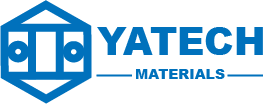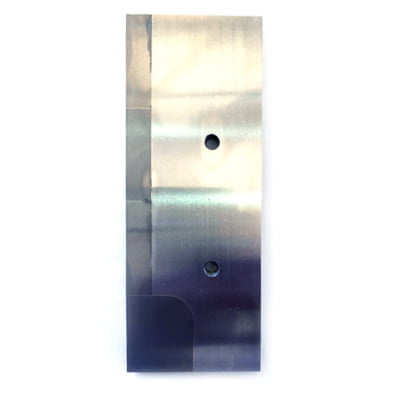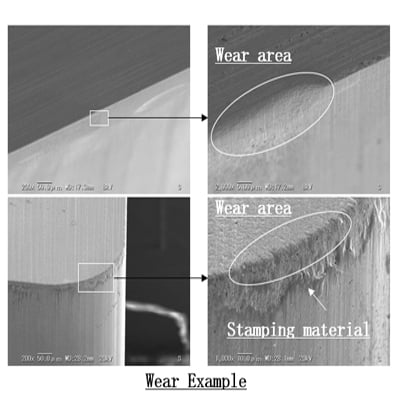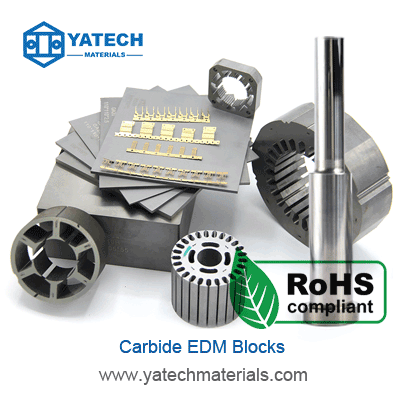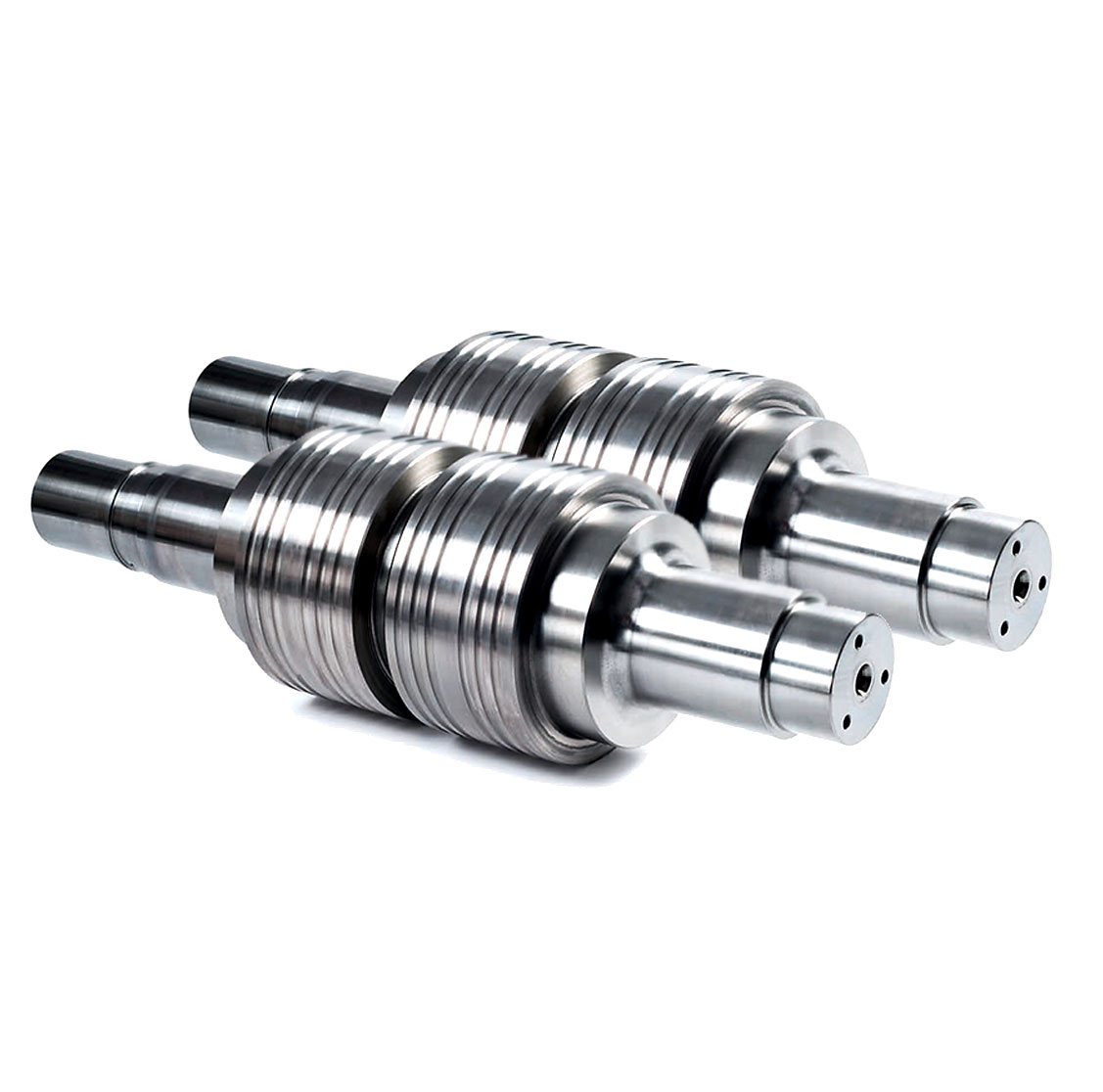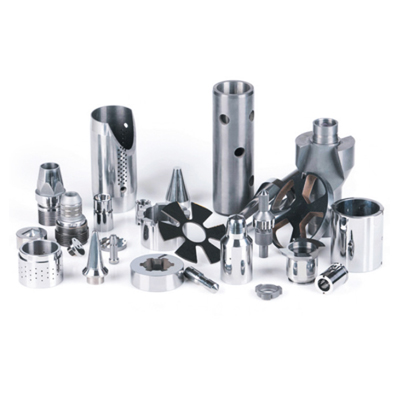
Classifications et utilisations courantes du carbure cémenté
Le carbure cémenté, également connu sous le nom d'alliage composé dur de métal, est un alliage composé d'un composé dur de métal réfractaire et d'un métal de liaison par le biais d'un procédé de métallurgie des poudres. Il existe de nombreux types de carbure cémenté, qui conviennent à diverses conditions de coupe, de résistance à l'usure, de résistance aux chocs et autres conditions de travail, ils sont donc largement utilisés dans la production quotidienne. Ensuite, examinons l'introduction des différents types de carbure cémenté.
Le carbure de tungstène présente une série d'excellentes propriétés telles qu'une dureté élevée, une résistance à l'usure, une bonne résistance et ténacité, une résistance à la chaleur et à la corrosion, en particulier sa dureté élevée et sa résistance à l'usure, qui se maintiennent fondamentalement même à une température de 500 ° C. Inchangé, il existe toujours une dureté élevée à 1000 ° C. Il existe principalement trois types de carbure cémenté pour outils de coupe, carbure cémenté pour la géologie outils miniers et carbure cémenté pour pièces résistantes à l'usure.
1. Carbure cémenté pour outils de coupe
Carbures cémentés pour outils de coupe sont divisés en six catégories : P, M, K, N, S et H selon les différents domaines d'utilisation ;
Classe P
Les alliages/alliages de revêtement à base de TiC et WC, avec Co (Ni+Mo, Ni+Co) comme liants, sont souvent utilisés dans l'usinage de matériaux à copeaux longs, tels que l'acier, l'acier moulé, la fonte malléable à coupe longue, etc. En prenant comme exemple la nuance P10, les conditions d'usinage appropriées sont le tournage, le profilage, le filetage et le fraisage dans des conditions de vitesse de coupe élevée, de sections de copeaux moyennes et petites ;
Classe M
Alliage/alliage de revêtement à base de WC, avec Co comme liant et ajout d'une petite quantité de TiC, couramment utilisé dans le traitement de l'acier inoxydable, de l'acier moulé, de l'acier au manganèse, de la fonte malléable, de l'acier allié, de la fonte alliée, etc. Tournage fin et alésage fin sous vitesse de coupe élevée, faible charge et sans vibration.
Classe K
À base de WC, avec du Co comme liant et en ajoutant une petite quantité d'alliages/alliages de revêtement TaC et NbC, il est souvent utilisé dans le traitement de matériaux à copeaux courts, tels que la fonte, la fonte refroidie, la fonte malléable à copeaux courts, la fonte grise, etc.
Classe N
Alliage/alliage de revêtement à base de WC, avec du Co comme liant et ajoutant une petite quantité de TaC, NbC ou CrC, couramment utilisé dans le traitement des métaux non ferreux et des matériaux non métalliques, tels que l'aluminium, le magnésium, le plastique, le bois, etc.
Classe S
Alliage/alliage de revêtement à base de WC, avec Co comme liant et ajout d'une petite quantité de TaC, NbC ou TiC, généralement utilisé pour le traitement de matériaux d'alliage résistants à la chaleur et de haute qualité, tels que l'acier résistant à la chaleur, les alliages de nickel, de cobalt et de titane. Traitement de divers matériaux d'alliage ;
Classe H
Alliage/alliage de revêtement à base de WC, avec Co comme liant, ajoutant une petite quantité de TaC, NbC ou TiC, couramment utilisé dans le traitement des cadeaux de coupe durs, tels que l'acier trempé, la fonte refroidie et d'autres matériaux ;
2. Carbure cémenté pour outils géologiques et miniers
Selon les différentes parties d'utilisation, il est divisé en catégories suivantes
1) Carbure cémenté pour forets de forage de roche ; conditions de fonctionnement telles que la nuance YA05, adaptée aux roches tendres ou moyennement dures avec une résistance à la compression uniaxiale inférieure à 60 MPa, nuance YA50/YA60 adaptée aux roches dures ou extrêmement dures avec une résistance à la compression uniaxiale supérieure à 60 MPa 200 MPa ; notes augmente, la résistance à l'usure diminue et la ténacité augmente.
2) Carbure cémenté pour l’exploration géologique ;
3) Carbure cémenté pour l’exploitation du charbon ;
4) Carbure cémenté pour forets miniers et pétroliers ;
5) Carbure cémenté pour matrice de feuille composite ;
6) Carbure pour pelle à neige;
7) Carbure pour dents d'excavation ;
8) Vis d'extrudeuse, tarières, palettes de mélange, garnitures, manchons
Plaques perforées et multi-trous, segments de vis, façonnage Rouleaux, pantoufles, matrices;
La dureté Rockwell de ce type d'alliage peut atteindre HRA85 et plus, et la résistance à la flexion est généralement supérieure à 1800 MPa.
3. Carbure cémenté pour pièces résistantes à l'usure
Selon le domaine d'utilisation, il est divisé en :
1) Carbures cémentés pour le tréfilage de fils métalliques, tiges, tubes et coques métalliques, telles que coque de batterie au lithium matrices de dessin, câble d'acier matrices de dessin, frappe à froid de fixations, etc., outils de formage des métaux.
2) Carbure cémenté pour matrices d'estampage, tels que la tôle d'acier au silicium, l'emboutissage de connecteurs électroniques, l'emboutissage de fixations, l'acier balle matrices d'estampage, etc.
3) Carbures cémentés pour composants haute température et haute pression, tels que marteaux supérieurs et cylindres pour diamants synthétiques.
4) Carbures cémentés pour anneaux de laminage de fils machine, tels que rouler anneaux pour laminoirs de finition de fil machine à grande vitesse, etc.
Le carbure peut être utilisé dans d’autres domaines nécessitant une résistance à l’usure.
